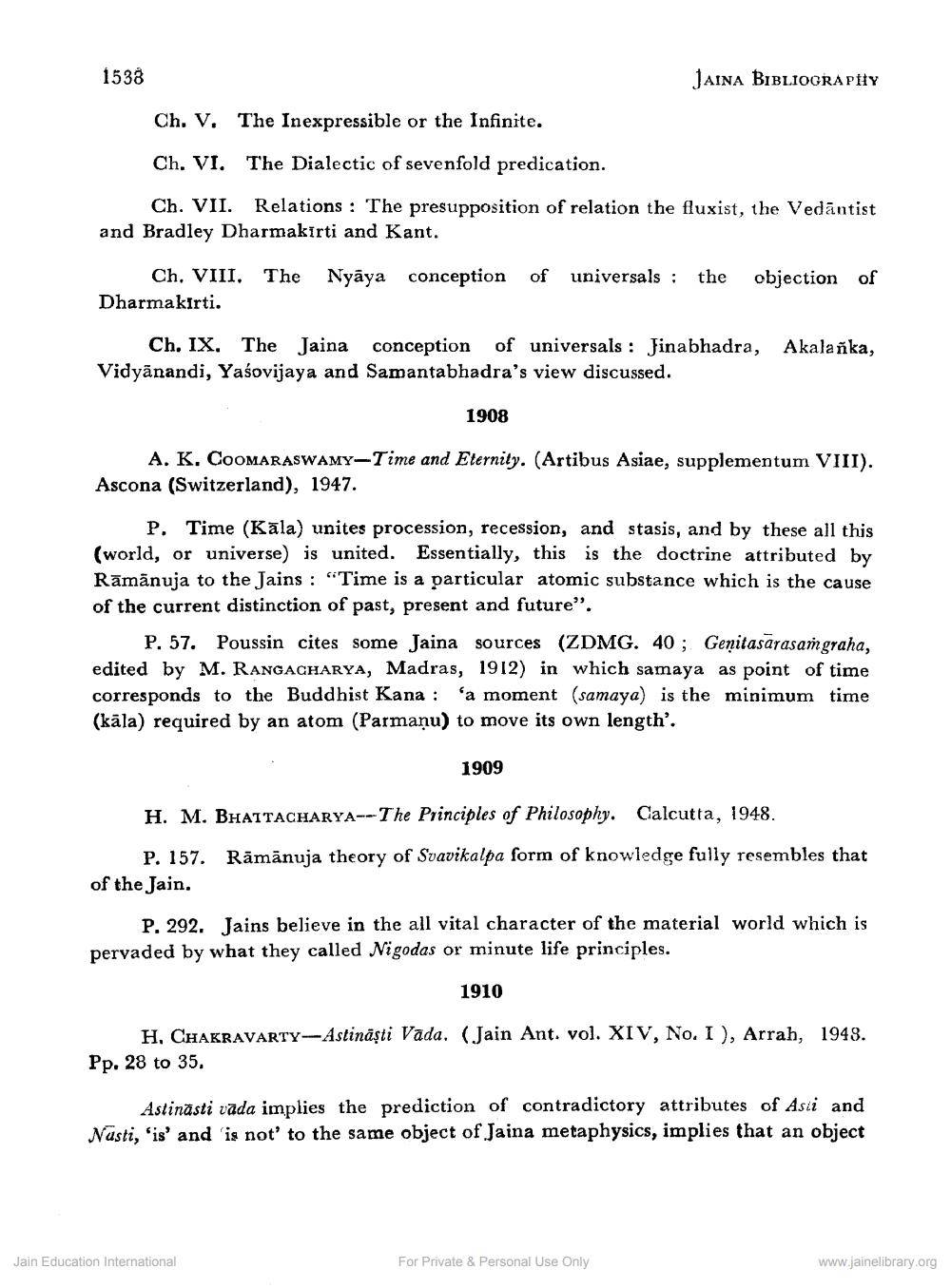________________
1538
JAINA BIBLIOGRAPHY
Ch. V. The Inexpressible or the Infinite. Ch. VI. The Dialectic of sevenfold predication.
Ch. VII. Relations : The presupposition of relation the fluxist, the Vedāntist and Bradley Dharmakīrti and Kant.
The Nyāya conception
of universals; the
objection
of
Ch. VIII. Dharmakirti.
Ch. IX. The Jaina conception of universals : Jinabhadra, Akalanka, Vidyānandi, Yasovijaya and Samantabhadra's view discussed.
1908
A. K. COOMARASWAMY-Time and Eternity. (Artibus Asiae, supplementum VIII). Ascona (Switzerland), 1947.
P. Time (Kāla) unites procession, recession, and stasis, and by these all this (world, or universe) is united. Essentially, this is the doctrine attributed by Rāmānuja to the Jains : "Time is a particular atomic substance which is the cause of the current distinction of past, present and future".
P. 57. Poussin cites some Jaina sources (ZDMG. 40; Genitasārasaņgraha, edited by M. RANGACHARYA, Madras, 1912) in which samaya as point of time corresponds to the Buddhist Kana: 'a moment (samaya) is the minimum time (kāla) required by an atom (Parmaņu) to move its own length'.
1909
H. M. BHATTACHARYA--The Principles of Philosophy.
Calcutta, 1948.
P. 157. Rāmānuja theory of Svavikalpa form of knowledge fully resembles that of the Jain.
P. 292. Jains believe in the all vital character of the material world which is pervaded by what they called Nigodas or minute life principles.
1910
H, CHAKRAVARTY--Astinäşti Vada. Jain Ant. vol. XIV, No. I ), Arrah, 1948. Pp. 28 to 35.
Astinästi vada implies the prediction of contradictory attributes of Asii and Nasti, 'is' and 'is not to the same object of Jaina metaphysics, implies that an object
Jain Education International
For Private & Personal Use Only
www.jainelibrary.org




